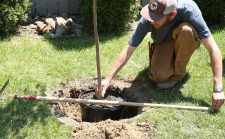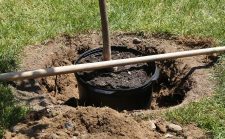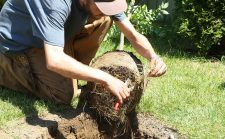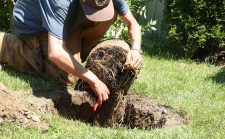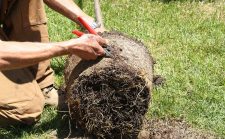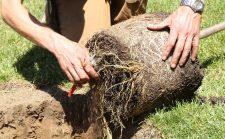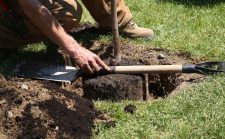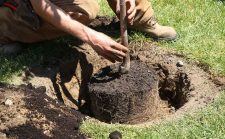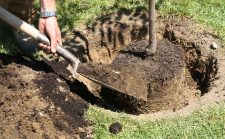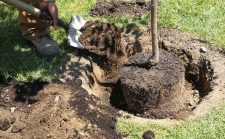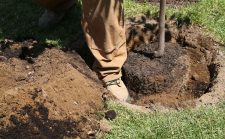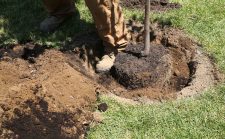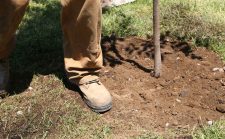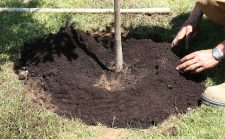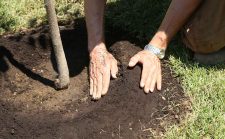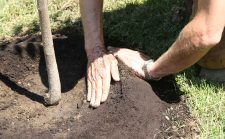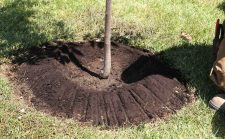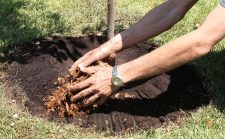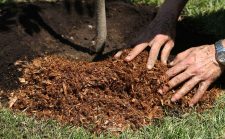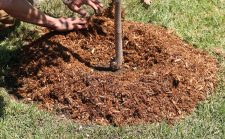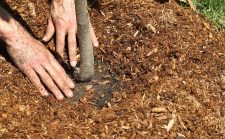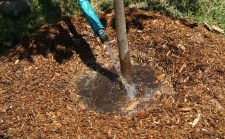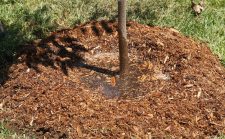Planting a tree doesn’t have to be intimidating. It can actually be quite simple and enjoyable. By following these steps, you will increase the chances of successfully transplanting your tree and its survival. To help you get started, watch the full video (in French only).
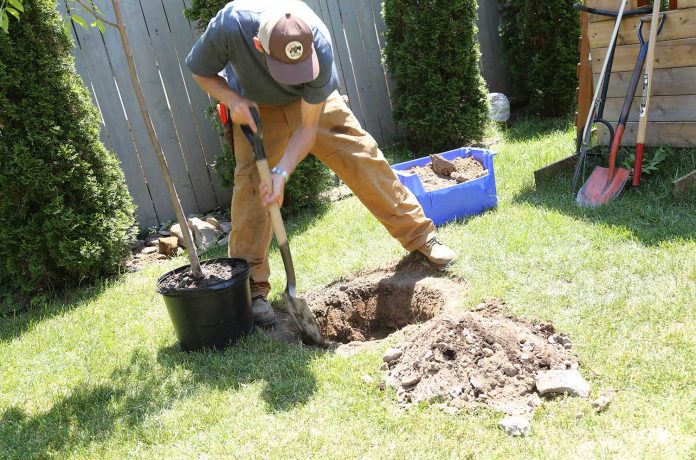
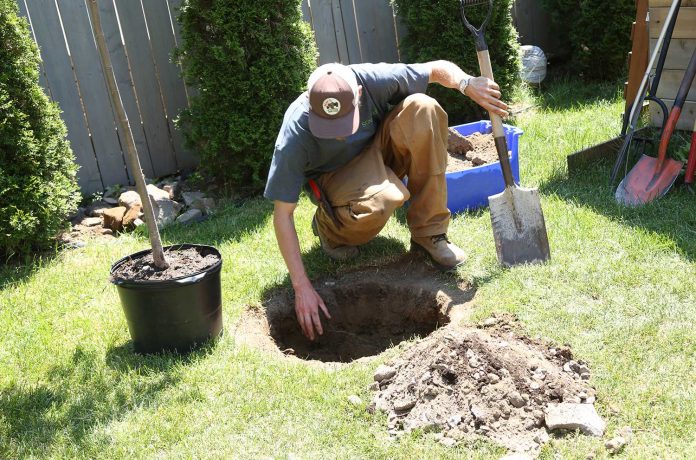
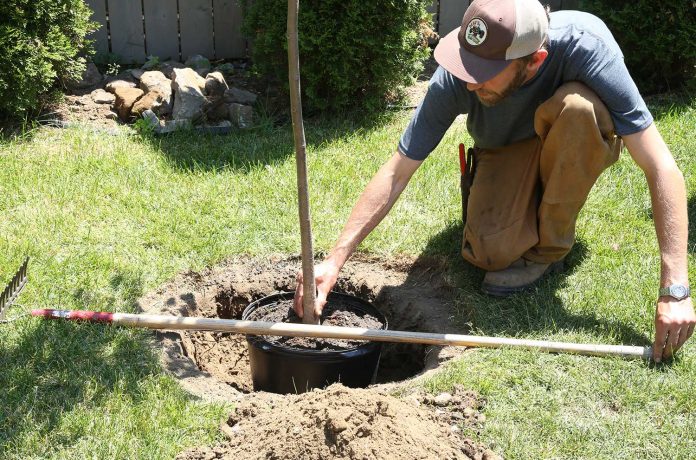
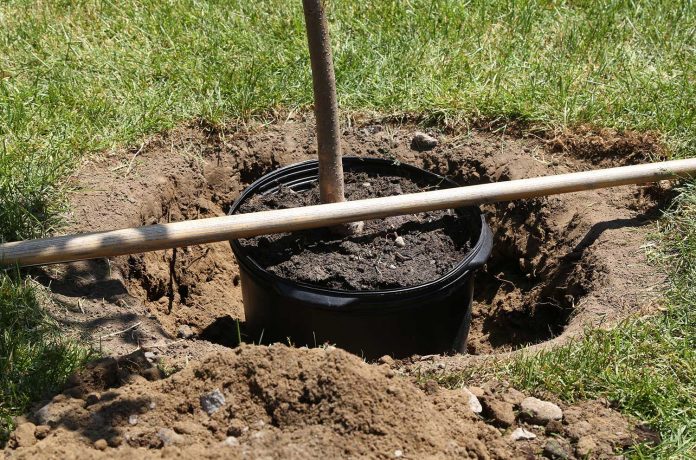
1. HANDLE YOUR TREE WITH CARE
It is important to always handle your tree with care. Move your tree by lifting the pot rather than the stem of the tree. This is especially important for fruit trees since they are often grafted on rootstocks and are more fragile.
2. DIG A HOLE AS DEEP AS THE TREE’S CONTAINER
The hole should be as deep as the pot the tree is in and at least twice as wide. The edges of the hole can be slanted.
3. REMOVE THE CONTAINER GENTLY
You can cut the plastic pot to make removing the tree easier. If there is an extensive network of roots (the roots have grown along the walls of the pot, called girdling), it is advisable to make a few cuts in the roots to sever the girdling roots.
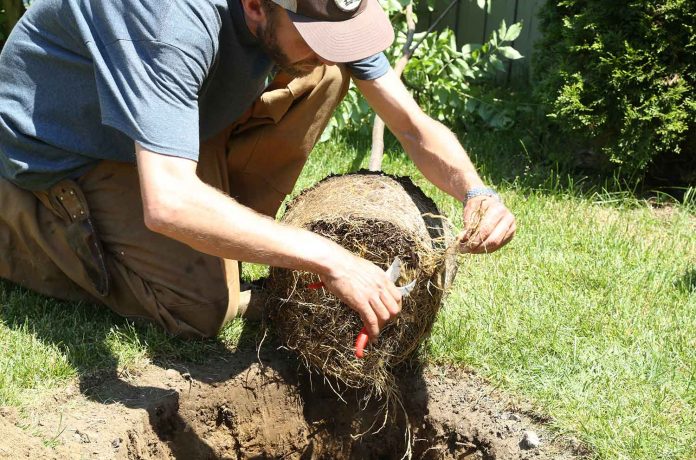
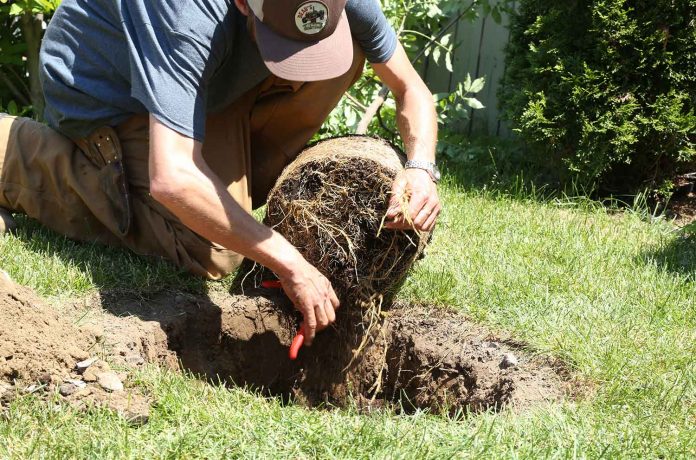
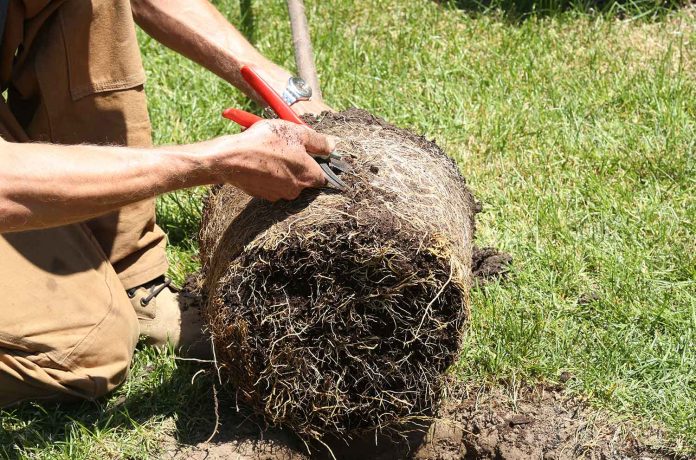
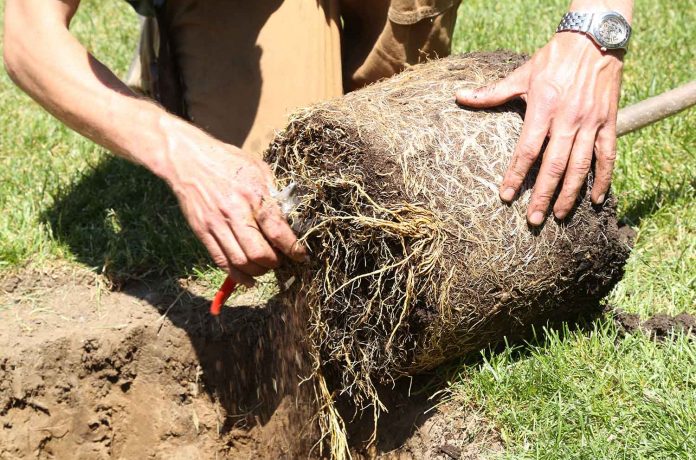
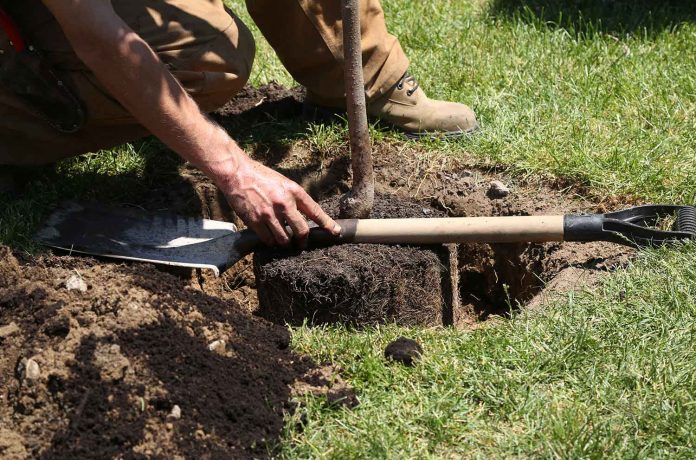
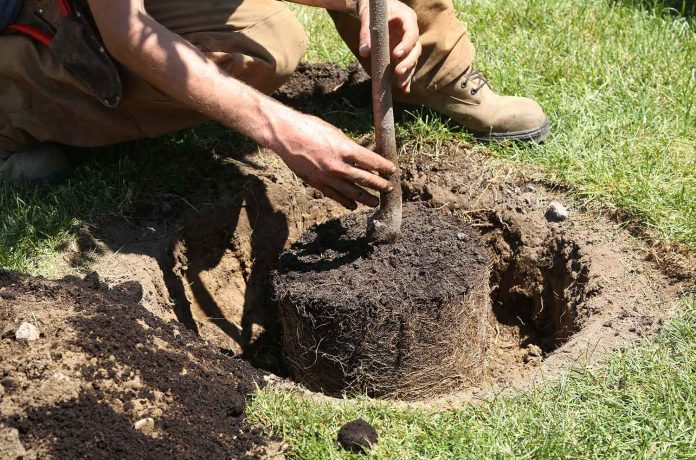
4. ADD MYCORRHIZAL FUNGI?
This year, our trees having already been inoculated with mycorrhizal fungi, so it is no longer necessary to add more when planting.
5. PLACE THE TREE IN THE HOLE
Make sure that the base of the trunk is level with the surface of the ground. Once the tree is in place, the trunk should be straight and the branches should be well positioned and have enough room to grow.
6. FILL IN THE HOLE
Fill in the hole one shovelful of soil at a time. Between each shovelful, lightly pack down the soil with your hands or feet to remove air pockets.
When filling the hole, make sure not to cover the root collar of the tree (for a regular tree) or the rootstock (for a fruit tree). These are easy to spot as they form a visible bulge at the base of the tree trunk.
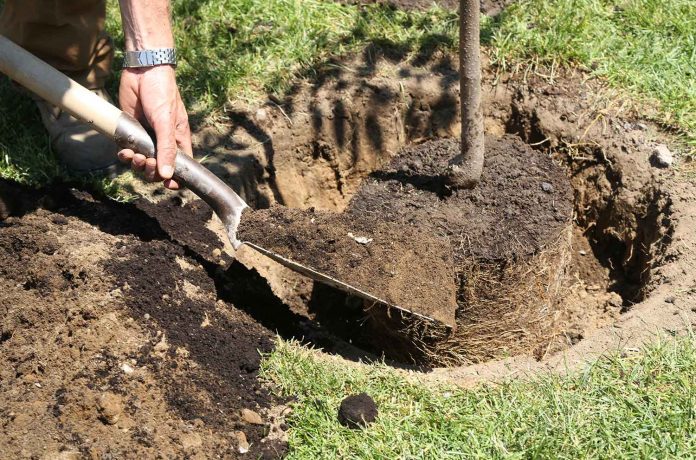
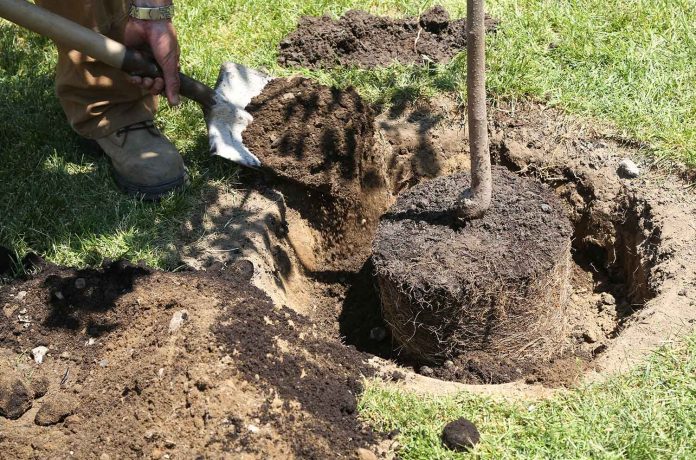
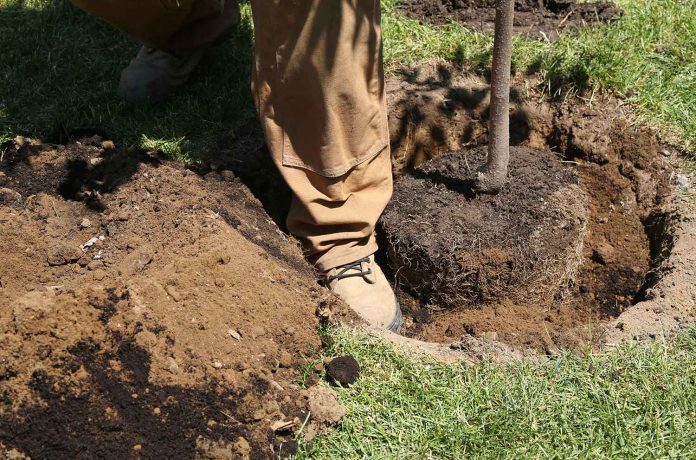
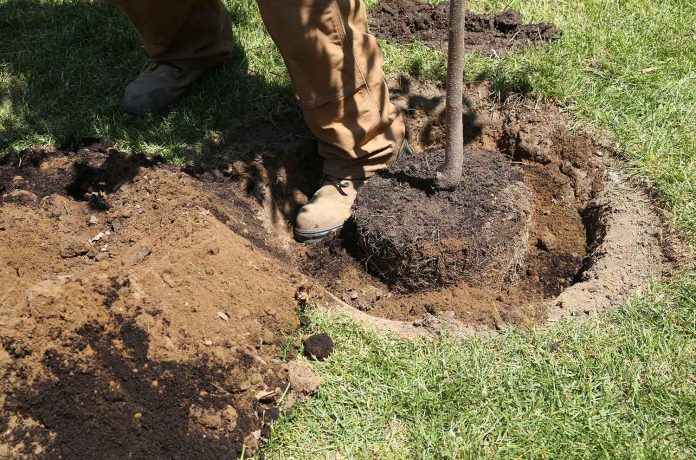
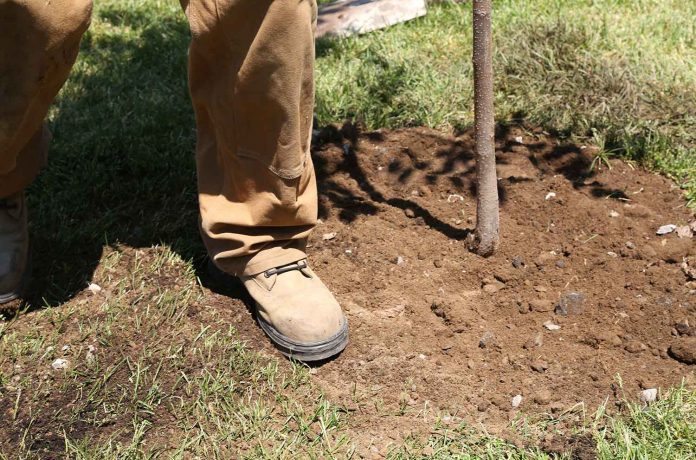
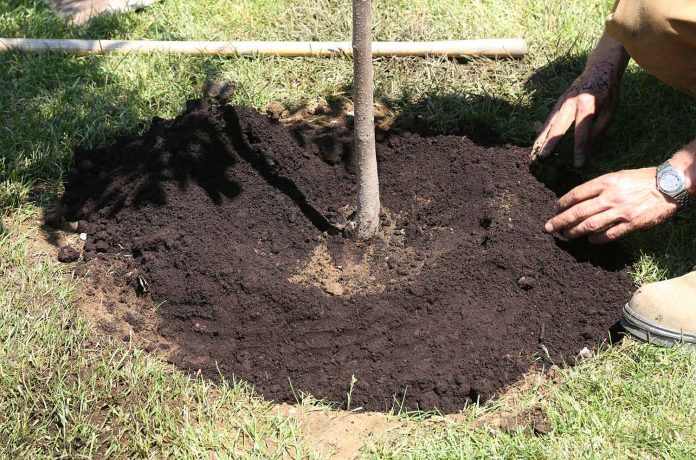
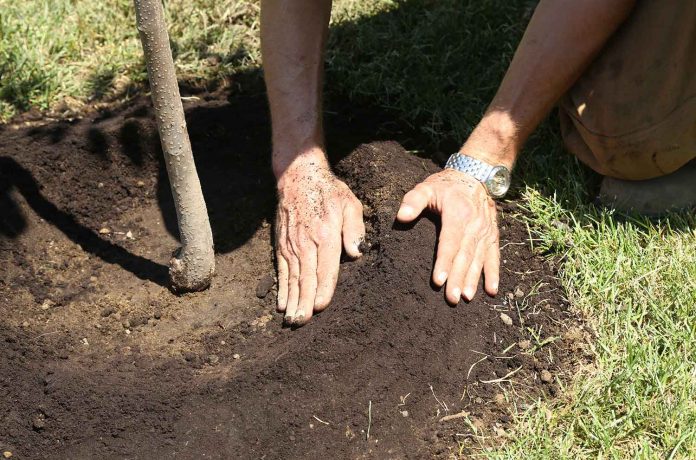
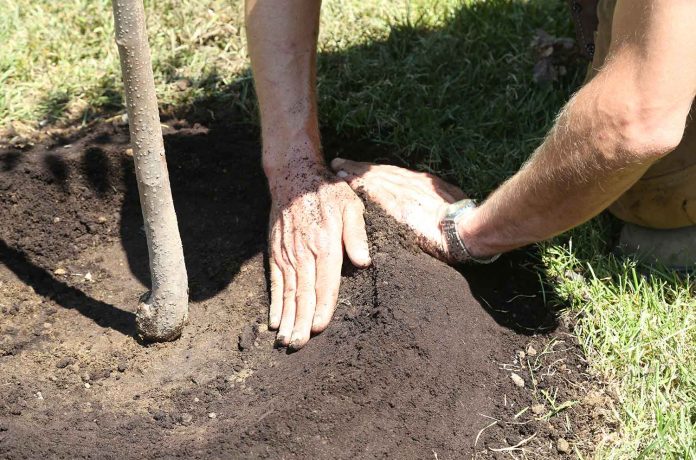
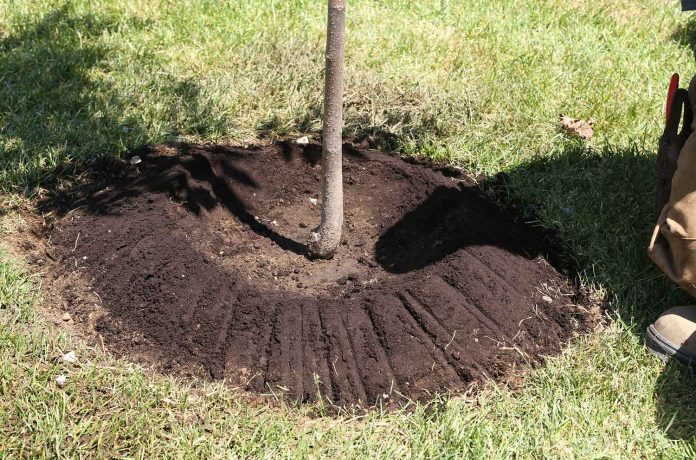
7. FORM A RING AROUND THE EXCAVATED PART
With the rest of the soil, form a ring around your tree to create a basin that will help retain water and move it towards the tree’s roots.
8. COVER THE EDGES AND THE INSIDE OF THE RING WITH A LAYER OF ORGANIC MULCH
Mulch helps retain moisture and provides the tree with nutrients as it decomposes. We recommend applying a fresh layer of mulch each year.
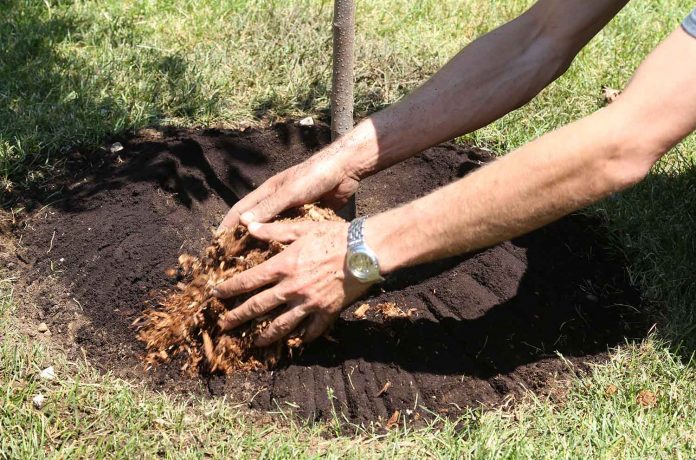
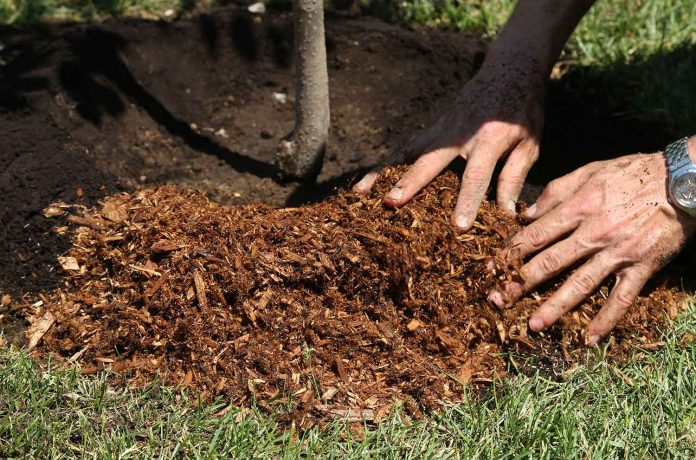

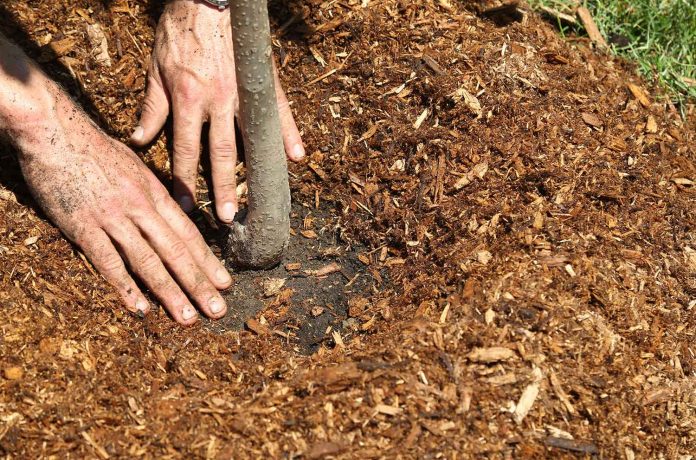
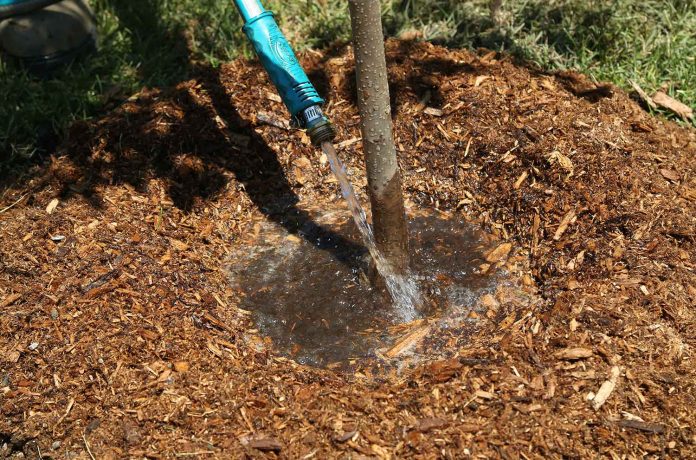
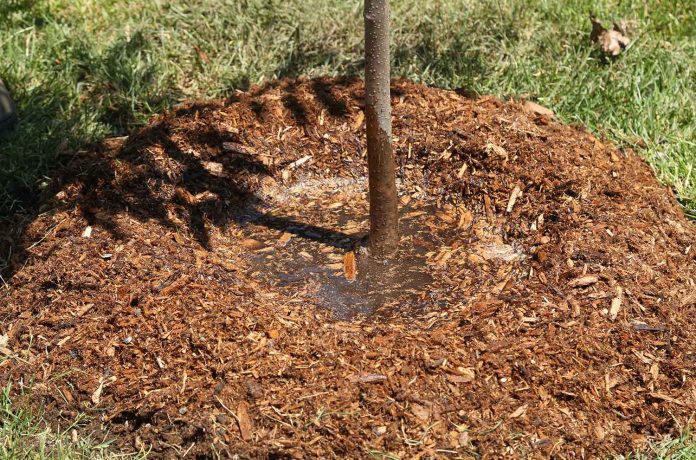
9. FILL THE RING WITH WATER AND LET THE WATER SEEP INTO THE SOIL
Water the tree immediately after planting. Fill the basin with water and let it seep into the soil. Slow, deep waterings are ideal for newly planted trees as this helps the tree establish deep roots.
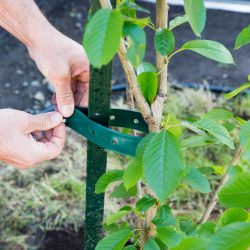
CONSIDER ADDING A STAKE
We recommend adding a stake if a tree is planted in a very windy location or on steeply sloping ground, if the tree is poorly rooted or if it is planted somewhere where it is likely to be knocked into.
If you are using a stake, be sure to:
• plant it outside the root ball;
• install it facing the prevailing winds;
• make sure the straps are not too tight;
• remove it after one year.

WHAT SOIL IS BEST FOR YOUR TREE
We recommend amending your soil with a good quality planting soil, as the in residential areas often lacks organic matter. The type of soil required will depend on the quality of the soil on your property and the species of tree you are planting. Ask your garden center for more information!
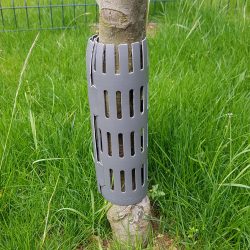
PROTECT YOUNG TRUNKS FROM RODENTS
We recommend protecting young tree trunks from rodents by using a trunk protector (several models are available). Install the protector for the winter only. Remember to move it up the trunk as snow accumulates and remove it in the spring.
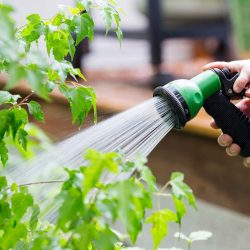
Water regularly
Water regularly and generously in the first two years after planting, especially during periods of drought. Allow the surface of the soil to dry out slightly between waterings. The best time to water is early in the morning or at the end of the day (when the tree is not in direct sun).


